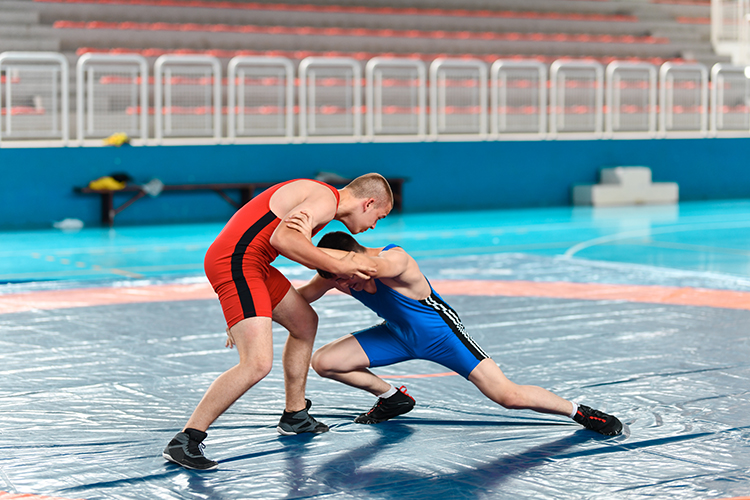
January 2, 2024, 7:20 p.m.
The Hospitalist Team
It is high school wrestling season. As a sports medicine doctor, we often get the job of doing “skin checks” for wrestling meets along with the athletic trainer. This means checking the skin all over for any signs of infection or fungus that can transmit easily to other wrestlers and equipment. It is an important job because skin infections can travel from wrestler to wrestler very easily, with the whole team quickly becoming infected. This is something that no trainer, parent, or athlete wants to happen.
Why do wrestlers get rashes more often than in other sports? They have a lot more skin-to-skin contact than other sports. During a match, they are almost constantly in contact with another player’s skin and the mats. They might wrestle several different people in tournaments, increasing exposure even more.
Common Wrestling Skin Infections
What are some common infections that wrestlers often get? Two of the most common are ringworm and herpes. Ringworm is a fungus (the fancy name is tinea corporis if it is on the body, tinea capitis if it is on the head) that creates a scaly, circle-shaped rash. It requires a cream applied a few times a day if it is on the body or medicine by mouth if it is on the head. Herpes is a virus—along the same lines as what causes cold sores. It creates vesicles (fluid-filled spots) that break open and cause red areas on the skin. The first time an athlete gets it, it can cause fevers and flu-like symptoms. It requires a medicine by mouth and can keep coming back year after year.
Prevention of Wrestling Skin Infections
Can you prevent these rashes? Many things can be done on both an individual and a team level to keep these wrestlers healthy.
- Good hygiene! Wrestlers should ideally shower after each practice or meet. Clothes should also be washed after each practice or meet as well.
- No sharing! Wrestlers should never share towels, razors, and soap in the showers. This allows for a fast spread of germs.
- Keep equipment clean: Mats should be cleaned and disinfected before and after use.
- When in doubt, check it out: Any area of concern should be checked out by a doctor or trainer as soon as possible to ensure early detection and treatment.
Following these guidelines can keep your wrestler healthy and out on the mat. Covering or avoiding going to the doctor can sometimes lead to long-term consequences in the case of certain rashes. It’s better to get it checked out and treated early.
If your child has signs of skin infection, our Washington University Children’s After Hours locations provide convenient medical care for your child’s illnesses and injuries as a faster alternative to the emergency room when your pediatrician’s office is closed. In most cases, children can be seen here or in a BJC Medical Group Convenient Care, rather than in the emergency room.
In case of a medical emergency with a child, determine where the nearest accredited, Level I pediatric trauma center is located. St. Louis Children’s Hospital has six pediatric E.R. locations across the St. Louis and southern Illinois region. These include St. Louis Children’s Hospital, Children’s Hospital at Memorial Hospital Belleville, Children’s Hospital at Memorial Hospital Shiloh, Children’s Hospital at Missouri Baptist Medical Center, Children’s Hospital at Northwest HealthCare, and Children’s Hospital at Progress West Hospital.










